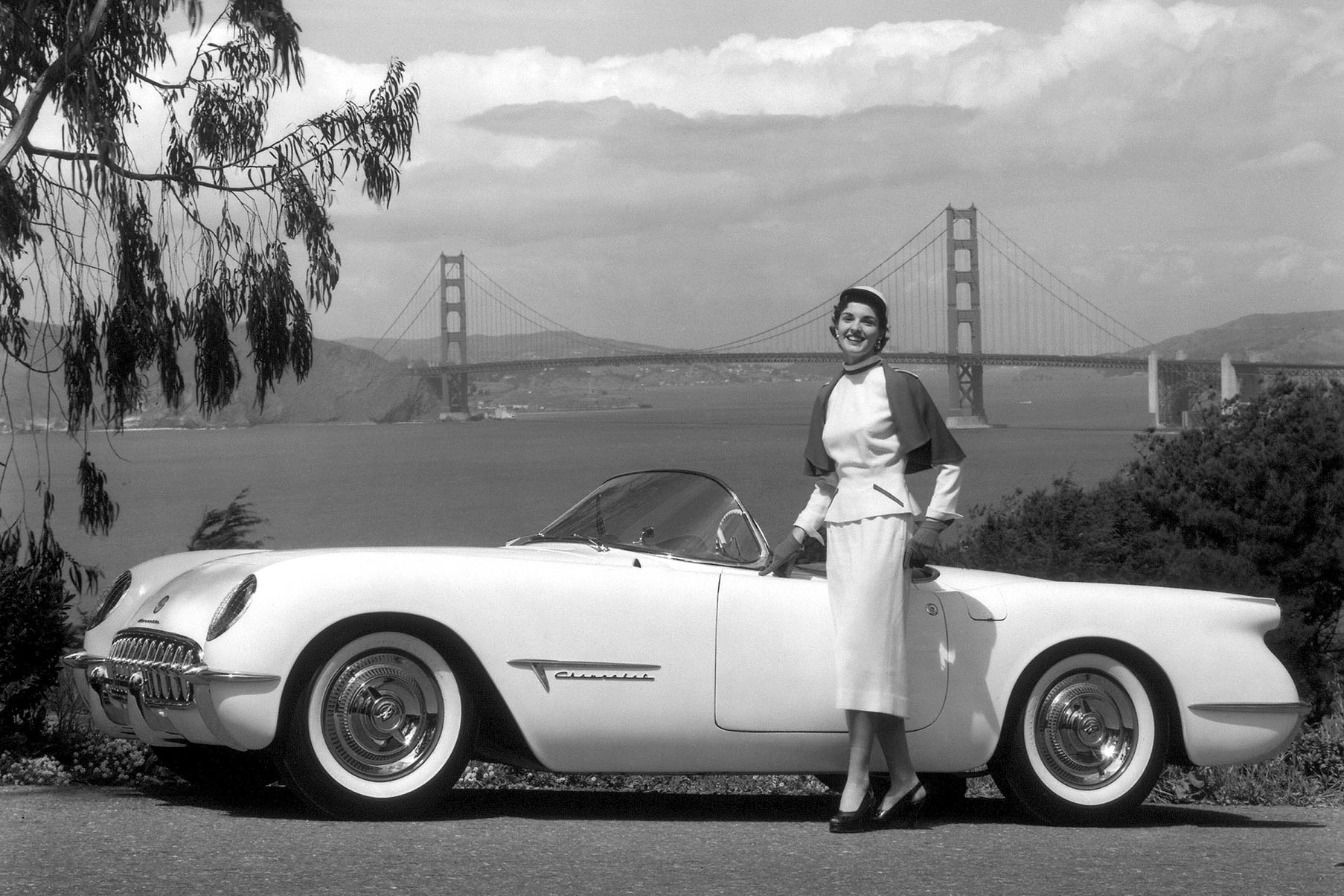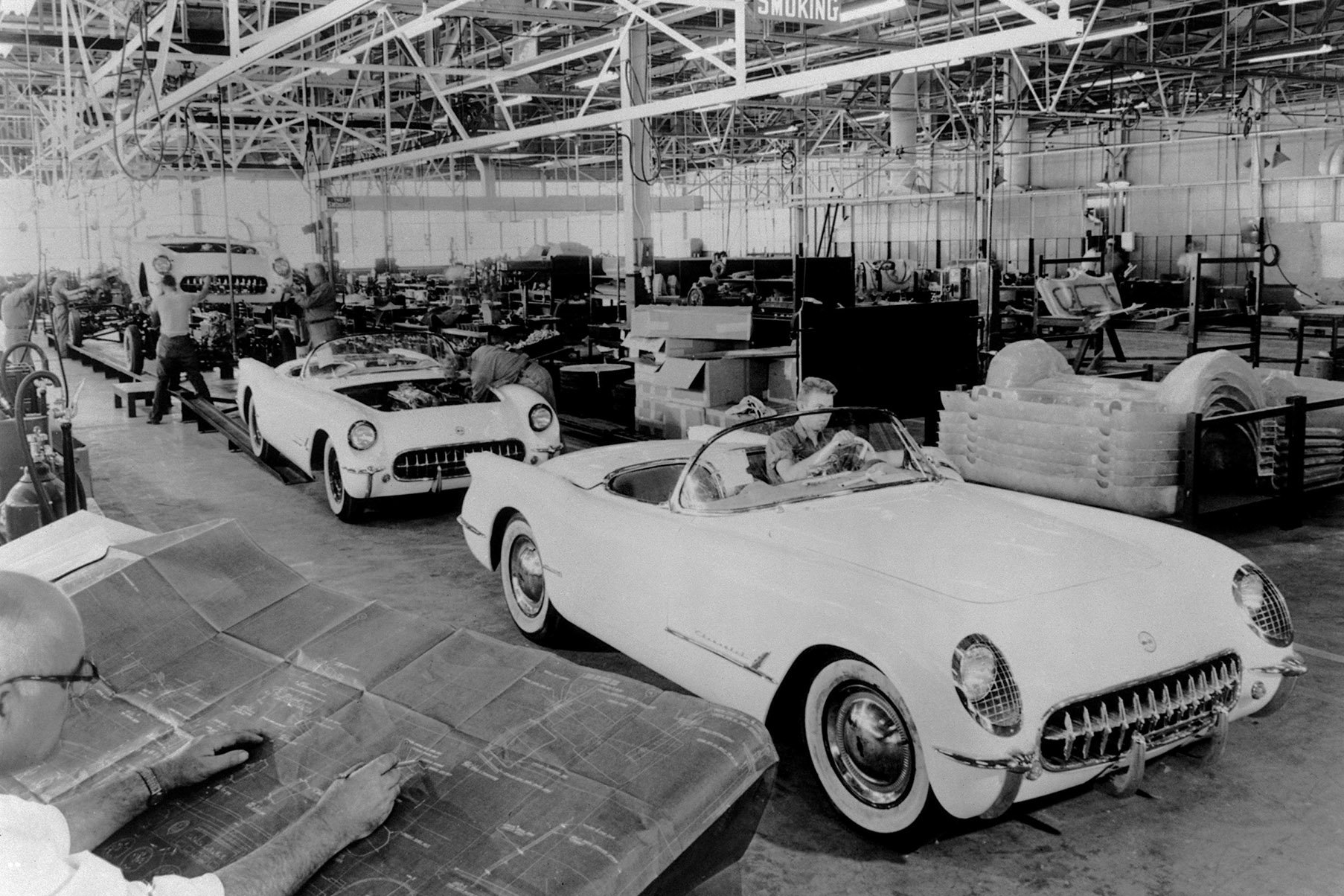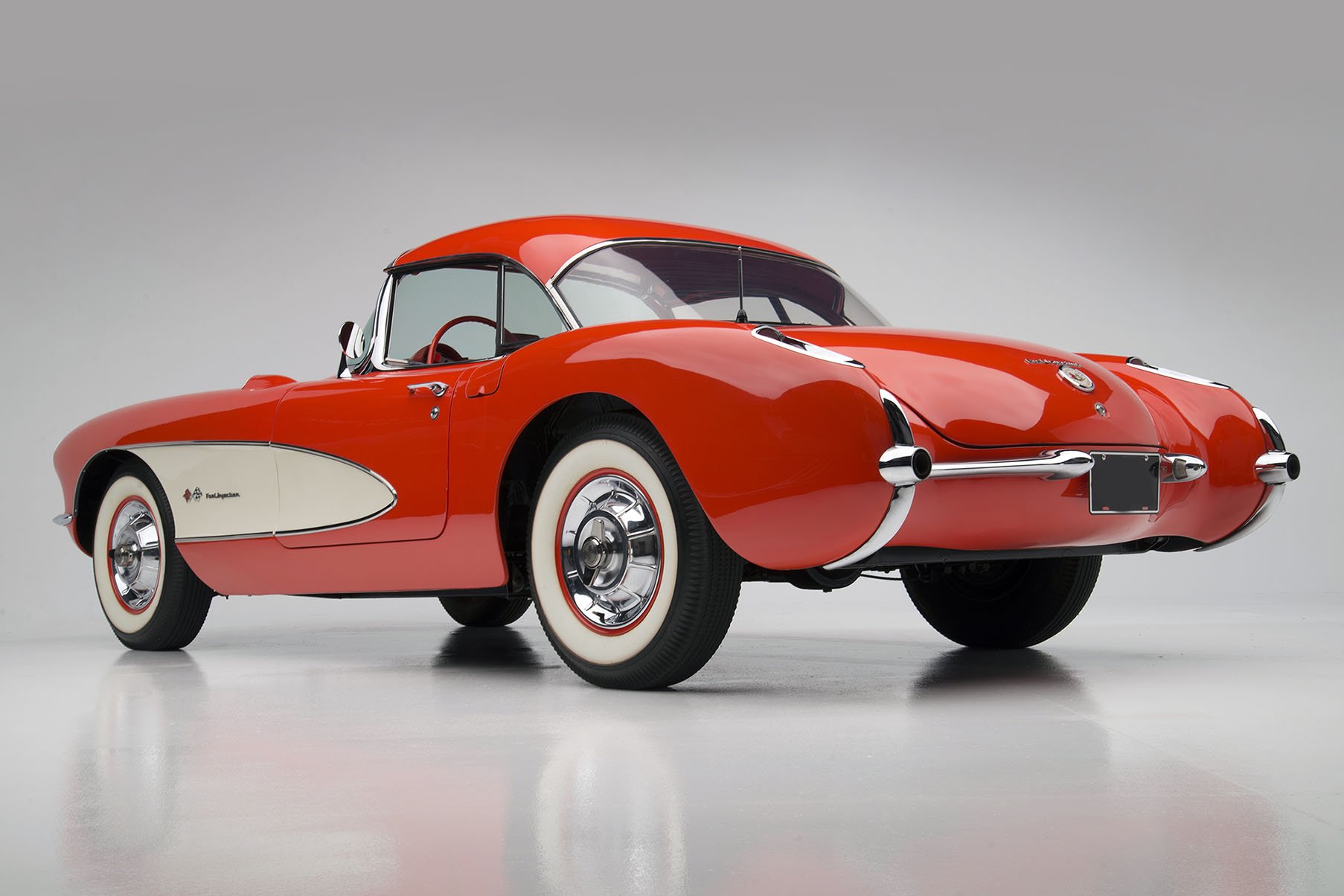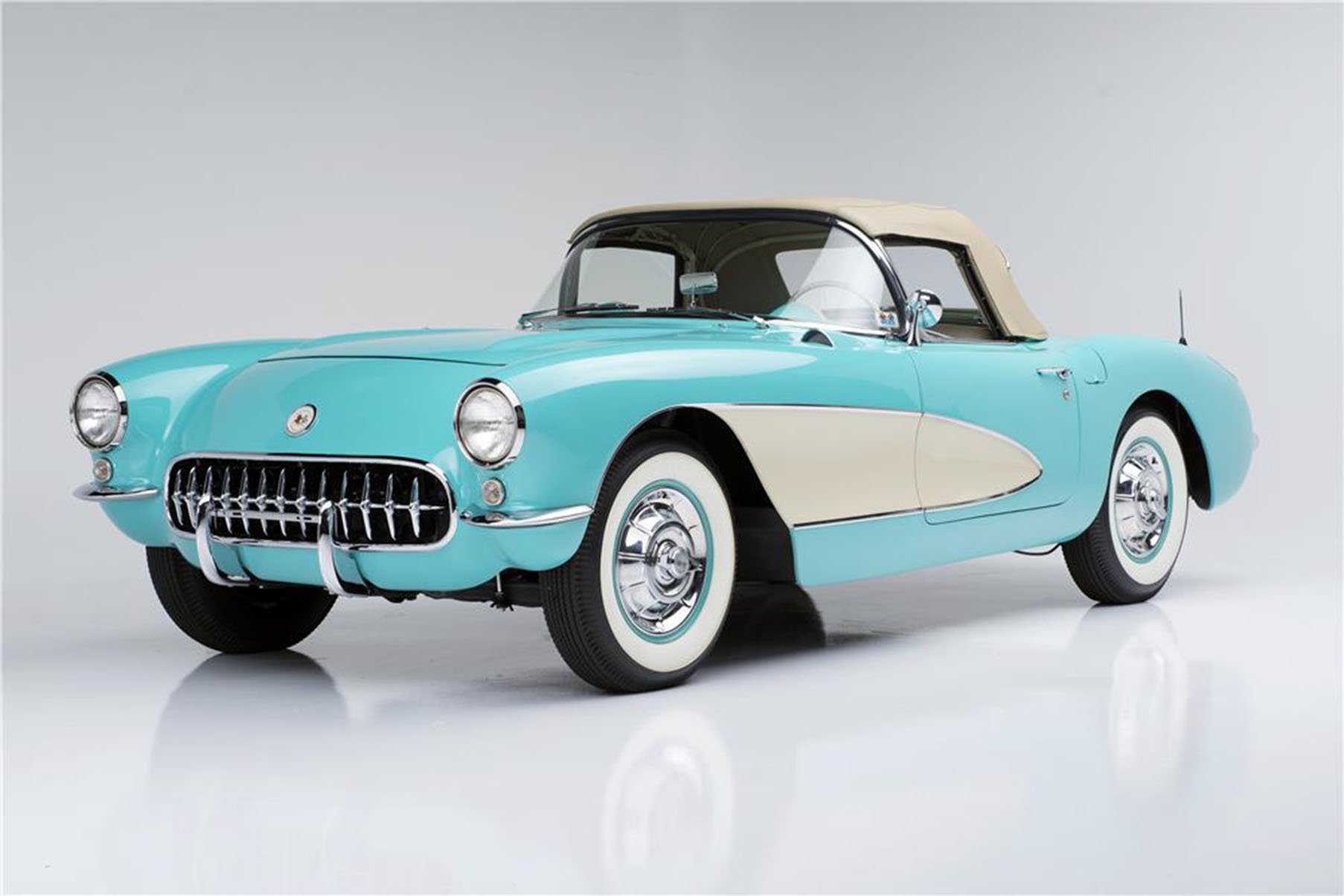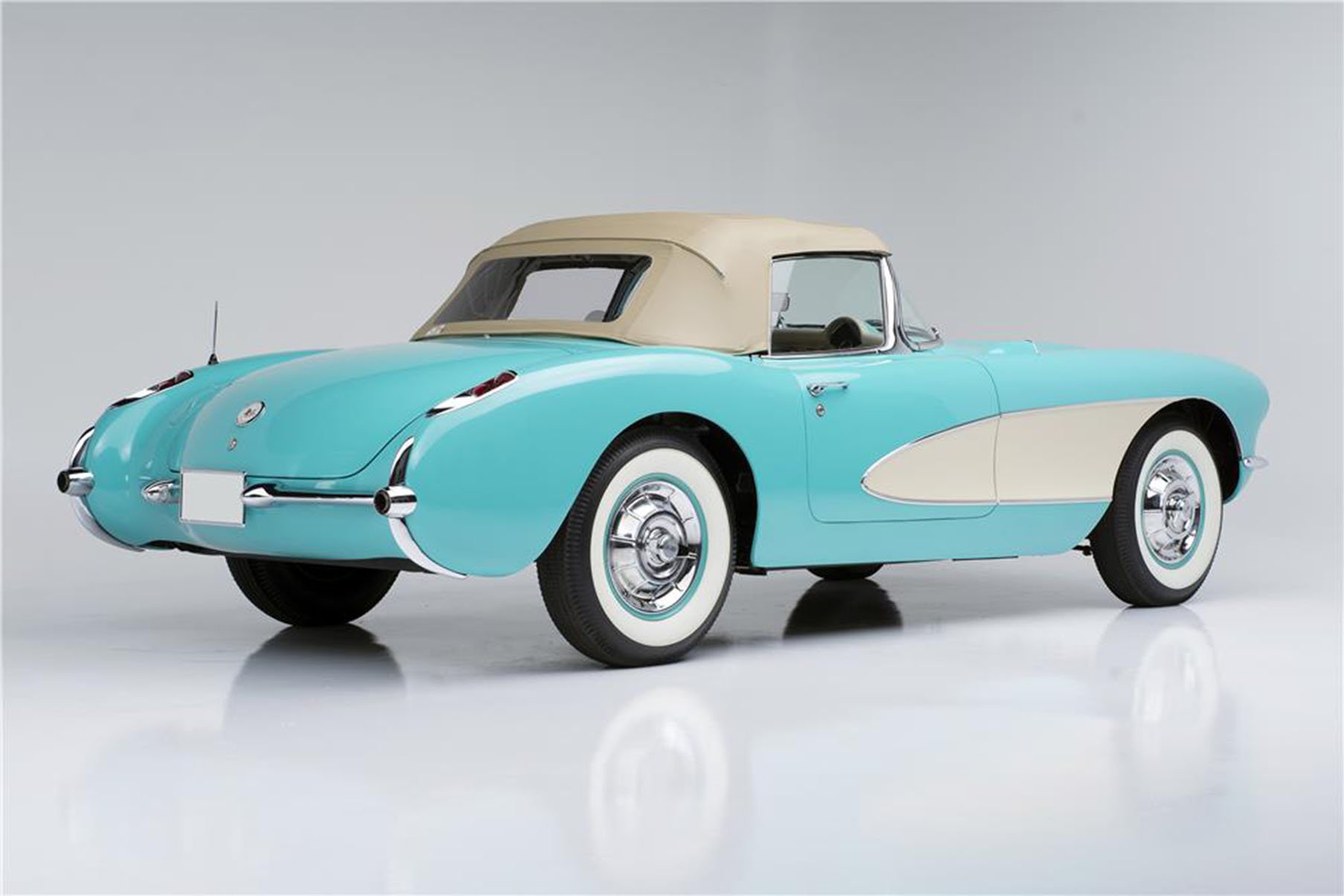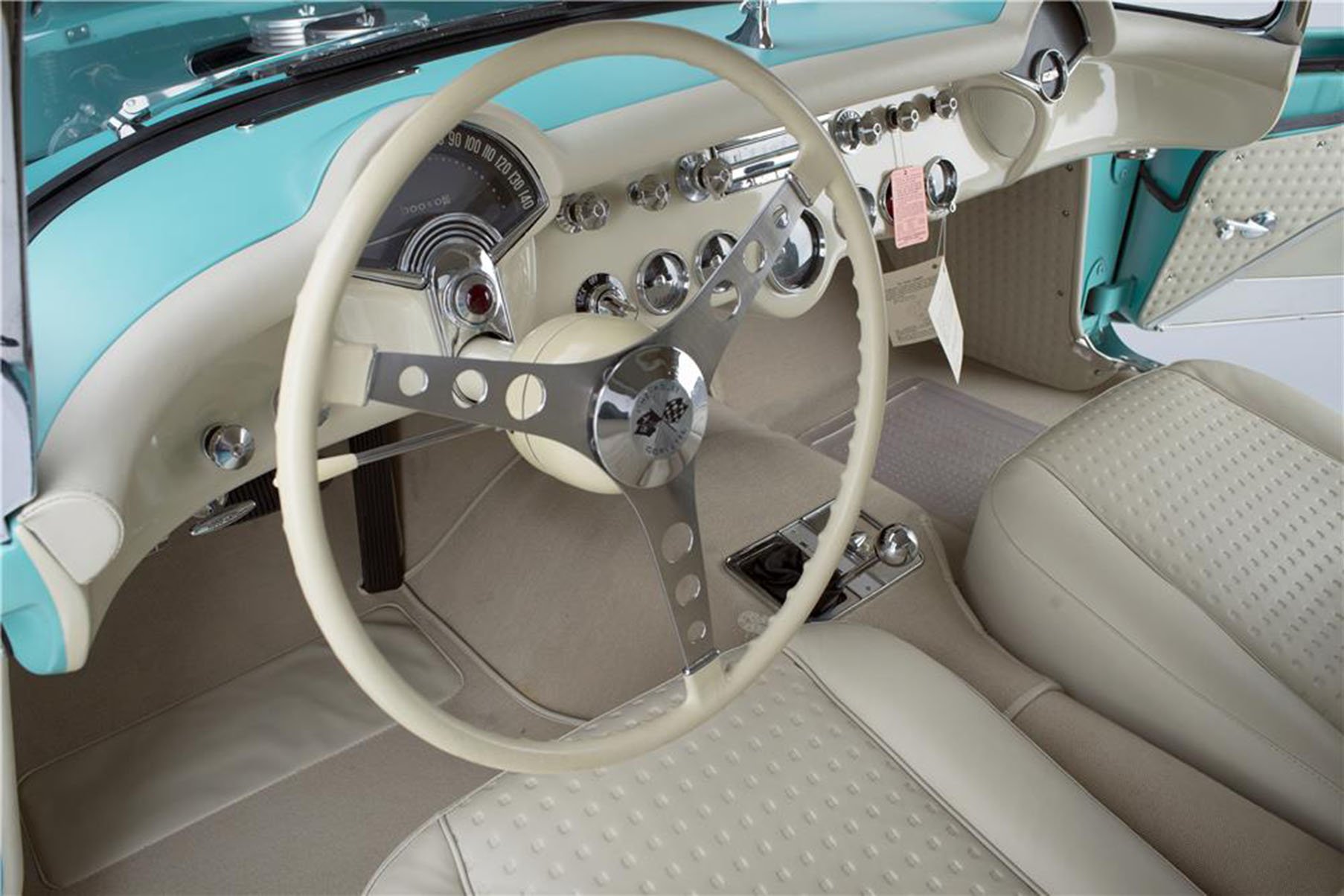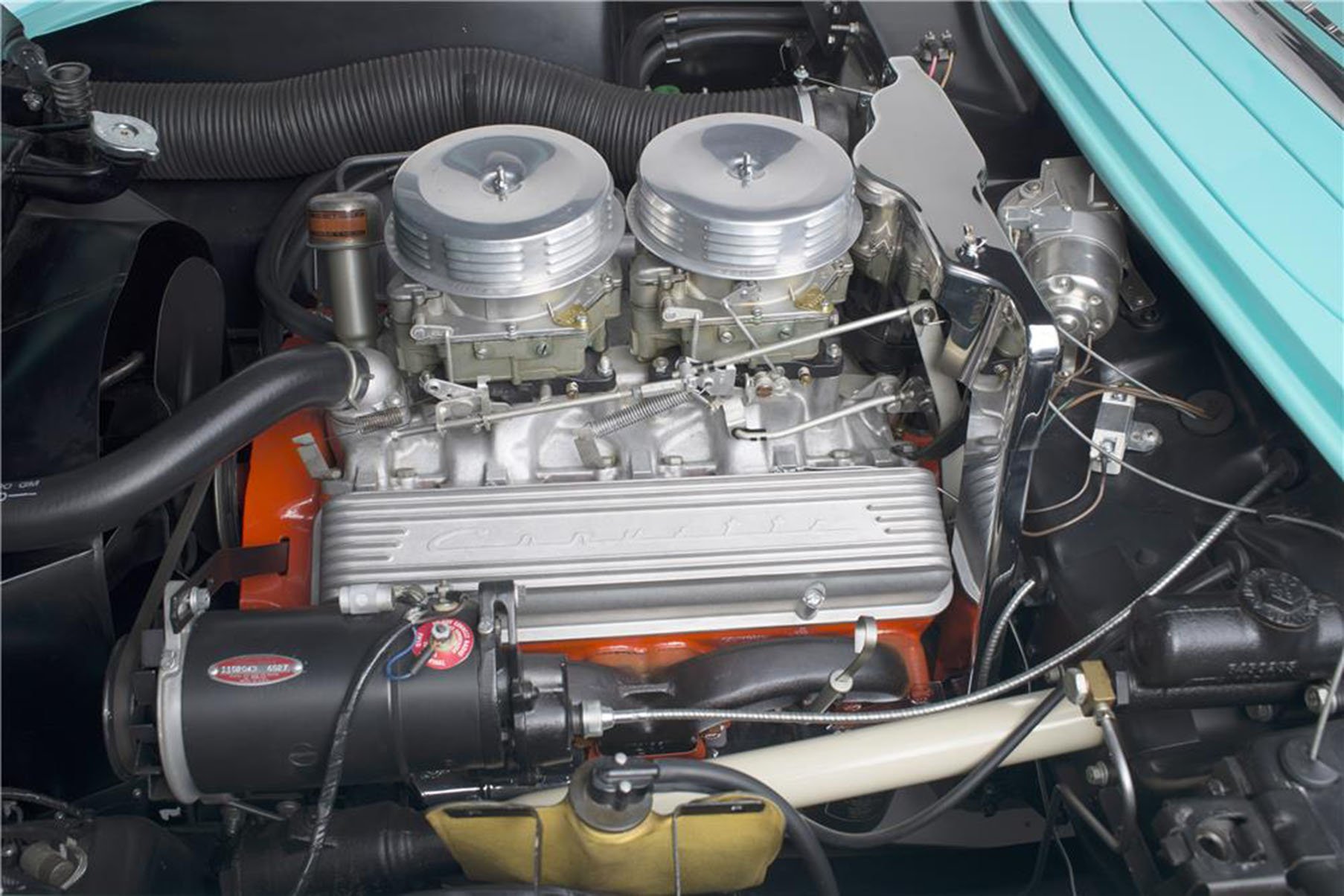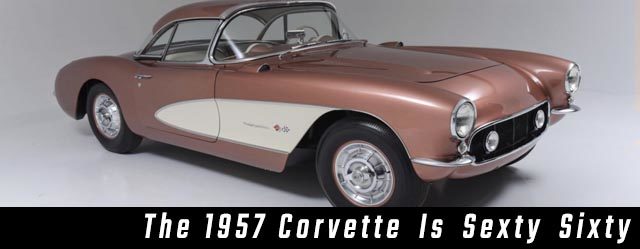 On June 30th, 1953, the first Chevrolet Corvette emerged from a makeshift truck assembly plant in Flint, Michigan which had been converted for the largely hand-built process of putting together Chevy’s new sports car. Since then, the Corvette has been in continuous production (with the notable absence of a new model for 1983 as production transitioned from C2 to C3) for more than six decades.
On June 30th, 1953, the first Chevrolet Corvette emerged from a makeshift truck assembly plant in Flint, Michigan which had been converted for the largely hand-built process of putting together Chevy’s new sports car. Since then, the Corvette has been in continuous production (with the notable absence of a new model for 1983 as production transitioned from C2 to C3) for more than six decades.
However, the Corvette’s vast future legacy of performance was nearly cut down. Just a few years into production, GM’s new sports car was in serious jeopardy of being sent to the chopping block. But the evolution of the mid-50s Corvette was a remarkable turnaround story, one which culminated with the now-iconic ’57 Corvette.
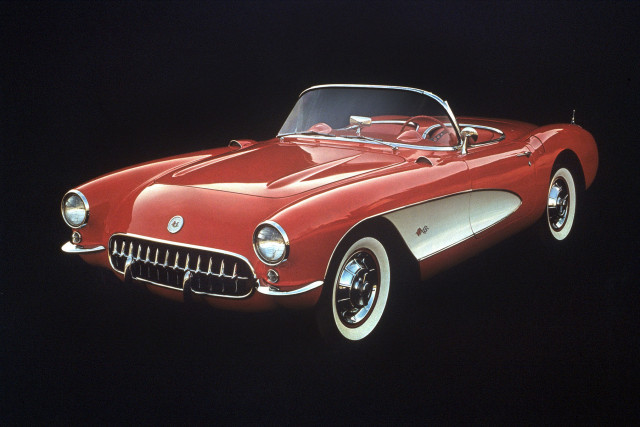
The 1957 Chevrolet Corvette was wholly different creature than the car that had debuted the model just four years prior. The optional fuel injected 283ci V8, four speed manual gearbox and other performance-focused hardware made available that year helped transform Chevy’s two-seater into a sports car capable of going to toe-to-toe with the strongest contenders from Europe. Image: GM
This year marks the 60th anniversary of that milestone in Corvette history, so we’re looking back at the milestones brought the 1957 Corvette from concept to reality and how it helped to permanently alter the model’s trajectory for the better.
The Path To Performance
Although the Corvette debut at the 1953 General Motors Motorama at the Waldorf-Astoria in New York City was met with wide acclaim by the motoring press and the public alike, the Corvette’s inaugural year of production saw a disconcertingly short honeymoon in terms of sales.
American consumers had been clamoring for a domestic response to the exotic sports cars offered across the pond ever since GIs had gotten a taste of two-seater Jaguars and Alfa Romeos while stationed in Europe during World War II. Aside from the costly Nash-Healy, American buyers had virtually no options for a home-grown sports car, and the prospect of General Motors changing that with the introduction of the Corvette had yielded plenty of fanfare for Chevrolet’s curvy new model.
The Corvette's Motorama debut had generated quite a bit of interest in Chevrolet's new drop top. Keen to get the model into customers' driveways while enthusiasm was still high, Chevrolet hastily began production at a converted truck plant in Flint, Michigan. However, a general lack of familiarity with the then-new fiberglass material used for the Corvette's body resulted in quality control issues that plagued the inaugural year of Corvette production. And while the car looked the part, the drive train combination of a 150 hp six cylinder engine and a two-speed automatic didn't deliver the sports car thrills that most buyers were looking for. Images: GM
Unfortunately the Corvette’s looks were writing checks its performance couldn’t cash. General Motors considered the Corvette project to be a gamble, and in order to keep the production costs of bringing such a vehicle to market from skyrocketing, the executive brass mandated that off-the-shelf mechanical components would underpin the new model where ever possible.
This meant that the ’53 Corvette’s powertrain consisted of a 235ci inline six cylinder engine, good for 150 horsepower, which was coupled to GM’s two-speed Powerglide automatic transmission since the company didn’t have a manual gearbox capable of handling that motor’s output at the time.
The result was a leisurely jaunt to 60 mph in 11.5 seconds that didn’t exactly set the world on fire. In similar fashion, the first Corvette was equipped with garden-variety drum brakes from Chevy’s passenger car parts bin, as well as a solid rear axle suspension.
Compounding the issue was the actual construction of the car. Chevrolet wanted to keep the momentum from the Motorama show going, so they quickly put together a manufacturing facility for the Corvette by converting a truck factory for the task.
Most of the construction and assembly of the 300 Corvettes produced that year were performed by hand, and working with the then-exotic fiberglass material used for the Corvette’s body yielded inconsistent results as production methods evolved as each car was built. Accordingly, it comes as little surprise that numerous reports from early adopters complaining of quality control issues in terms of fit and finish poured in once the cars were delivered to buyers.
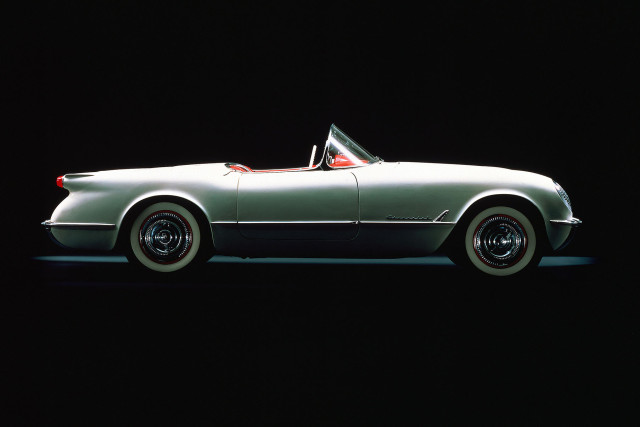
By 1954, it was clear that the Corvette was under-performing not only on the street, but also in the showroom. However, after nearly getting the axe from executives at General Motors, Chevrolet decided to get serious about Corvette performance. Image: GM
Combined with the lackluster performance and absence of customer-specified options (all ’53 models were more or less identically equipped with Polo White paint, red interiors, and black canvas tops), the public’s excitement had all but completely dried up by the time the 1954 models hit showrooms, and that year would see nearly a third of the 3640 examples built left unsold by the year’s end.
The situation was undeniably ominous, and apparently dire enough for General Motors to consider scrapping the Corvette altogether and moving on. But that year would see a handful of pivotal events that would help transform Chevrolet’s two-seater into a world class performance car in very short order.
Reinventing the Corvette
Perhaps the biggest and most immediate factor that prevented the Corvette from going to the chopping block was Chevrolet’s heated rivalry with Ford. Once GM brass caught wind of the upcoming Thunderbird – a swoopy two seater that, at least on paper, seemed positioned to go toe-to-toe with the Corvette – was headed to production, they knew they couldn’t quietly sweep the Corvette debacle under the rug.
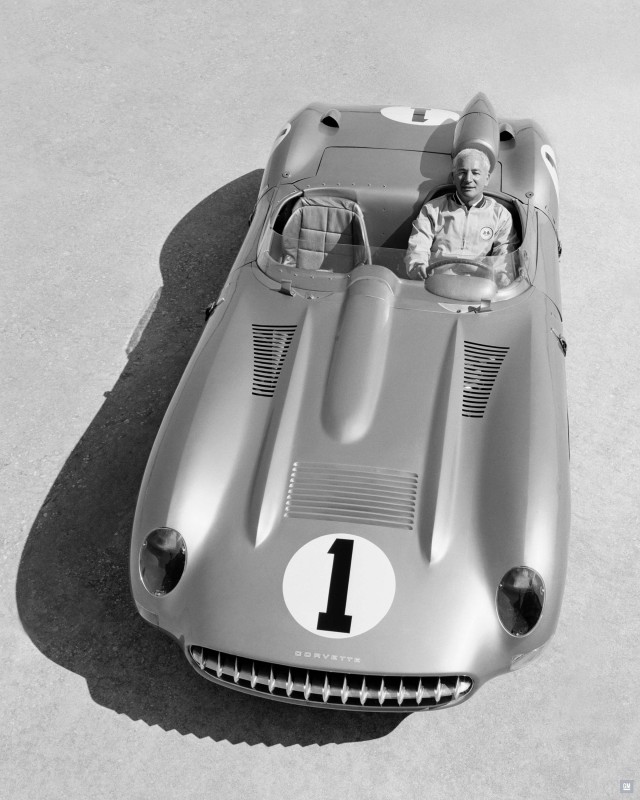
GM engineer Zora Arkus-Duntov is seen here behind the wheel of the 1957 Chevrolet Corvette SS XP-64, an experimental race car built largely in secret with intention of competing in the 1957 24 Hours of Le Mans. However, the AMA racing ban issued that year would prevent the car from ever competing at the Circuit de la Sarthe. Image: GM
Instead they doubled down on the Corvette with the help of a racer-turned-engineer by the name of Zora Arkus-Duntov. Duntov had started with GM as an assistant staff engineer in the spring of 1953, and quickly established himself as a driving force within the company. Shortly after taking the position with the company, he sent a memorandum to his superiors entitled “Thoughts Pertaining to Youth, Hot Rodders and Chevrolet”, a treatise which would lay the foundation for Chevrolet’s ongoing focus and support of high performance endeavors in the decades that followed.
Duntov was an avid enthusiast of performance and a skilled wheelman with a penchant for racing. He sought to transform the Corvette into something that could compete on the world stage, offering performance on par with vehicles from the likes of Porsche, Mercedes-Benz, and Ferrari.
Fortunately for Duntov, his timing was pretty ideal – just as he joined the Corvette development team, Chevrolet was poised to introduce a revolutionary new power plant for 1955 with the Chevrolet small block V8. Although the car was still held back by its two-speed automatic gearbox, performance was heading in the right direction when Chevrolet installed the 265ci V8 in the engine bay of the early ‘55 models, and by the end of that year’s production run a three-speed manual gearbox was also made available.
1956 would continue a series of positive changes for the Corvette. Along with an expanded set of features and options, improved refinement, and more performance, the body underwent significant tweaks that gave the Corvette a substantially more athletic appearance. 1957 models like the one seen here largely carried over the aesthetic from the previous year with a few subtle changes. Image: GM
By the time the 1956 model year Corvette debuted, it was clear that Chevrolet was making an earnest effort to bring a legitimate sports car to the American public. At this point the three-speed manual gearbox was standard equipment, the six-cylinder motor was nowhere to be found on the options list, and numerous refinements had been made to the car in terms of both functionality and aesthetics. While production volume for 1956 would prove to be the third-lowest in Corvette history, these improvements set the stage for a car that would become a performance icon.
The Plan Comes Together
The various factors that contributed to the upward arc of first generation Corvette truly coalesced for 1957. While the body was nearly identical to the ’56, minor aesthetic tweaks helped to visually bolster the Corvette’s sense of athleticism, and wide array of new available features combined with improved quality control made the car significantly more appealing to the buying public. However, what truly set the 1957 model apart from previous Corvettes lurked underneath the skin.
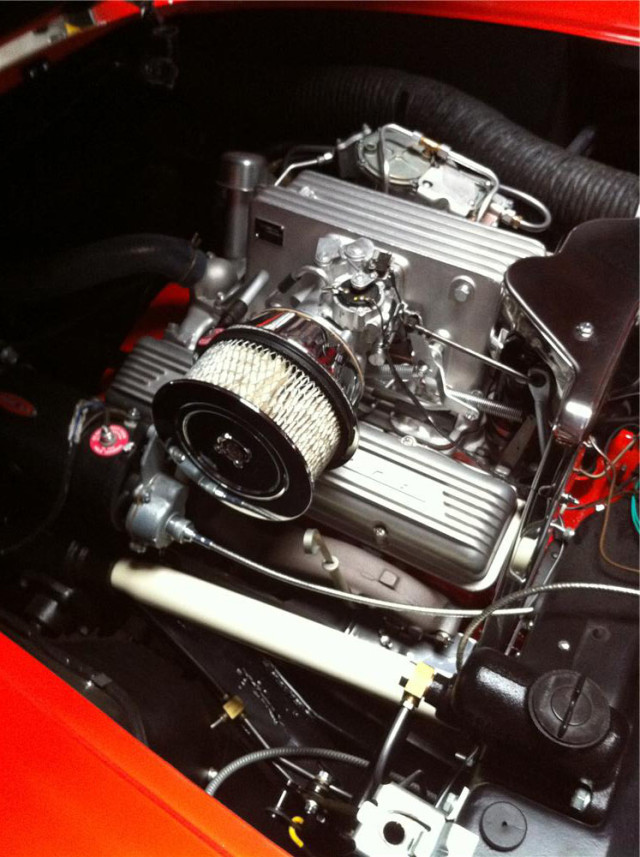
For the 1957 model year, GM punched the small block V8’s displacement out to 283 cubic inches, and the Ramjet fuel injection unit seen here was made available on all models in Chevy’s roster. Image: Barrett-Jackson
Ed Cole, the newly appointed general manager of Chevrolet, wanted 1957 to be a banner year for the company. Cole was well aware that performance would be a crucial part of the equation, so he assigned Duntov to oversee a team engineers who would design a fuel injection system that would be optional on all 1957 model year Chevrolets.
With the help of John Dolza, an engineer in GM’s Rochester division that was well versed in the complexities of injection system design, and whom Duntov once described as “a splendid man, brilliant and clear thinking,” Chevrolet brought Ramjet fuel injection to the options sheet of every Chevrolet model for 1957.
At the same time, displacement of Chevy’s small block V8 was bumped up to 283ci, resulting in a top spec ’57 “Fuelie” Corvette dishing out an advertised 283 horsepower and 290 pound-feet of torque. Although the motor unofficially made 290 horsepower, GM’s marketing team wanted to capitalize on the notion of “one horsepower per cubic inch” by matching the displacement and output numbers.
This 1957 Corvette, which sports VIN #001, was not only the first production 283ci Corvette, but the first production 283ci Chevrolet vehicle. Although equipped with a 245 horsepower version of Chevy's 283ci V8 and a two-speed automatic rather than the available four-speed manual gearbox, this pristine drop top fetched $1.8 million at a recent Barrett-Jackson auction. Images: Barrett-Jackson
By now heavy duty racing suspension, a four-speed manual gearbox and wider high performance wheels and tires were all available options to buyers, and the Corvette’s newfound performance prowess was met with rave reviews from the motoring press. “The fuel-injection engine is an absolute jewel, quiet and remarkably docile when driven gently around town, yet instantly transformable into a roaring brute when pushed hard,” wrote Road & Track. “The data is unequaled by any other production sports car,” they added, in reference to their instrumented testing of a four-speed Corvette equipped with the fuel-injected 283ci V8.
A Collectible Milestone
Sixty years on, the 1957 Corvette’s place in sports car history is made clear by example like this “Serial One”, which at Barrett Jackson’s Scottsdale auction in 2016 for nearly two million dollars.
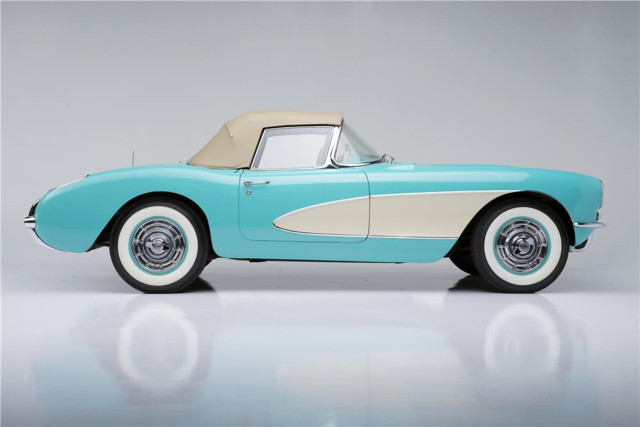
Regardless of configuration, the ’57 Corvette remains one of the most instantly recognizable sports cars in automotive history. Image: Barrett-Jackson
Although faster and more capable Corvettes would be developed as the muscle car era took shape over in the years afterward, the ’57 Corvette and its Ramjet-equipped 283ci V8 proved to be a crucial turning point for Chevrolet’s sports car. Sales of the Corvette nearly doubled that of the previous year, setting off a positive trend that would continue throughout the first generation Corvette’s production run.
By the time the C1 was ready to bow out to make room for the second generation model for 1963, Corvette sales had more than doubled those of 1957’s with 14,531 examples built. At that point the two seater had thoroughly solidified its place in General Motors stable, paving the way for decades of Chevrolet-flavored sports car performance to come.



